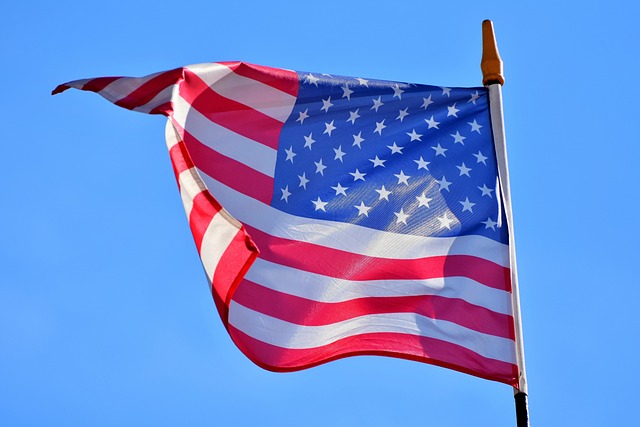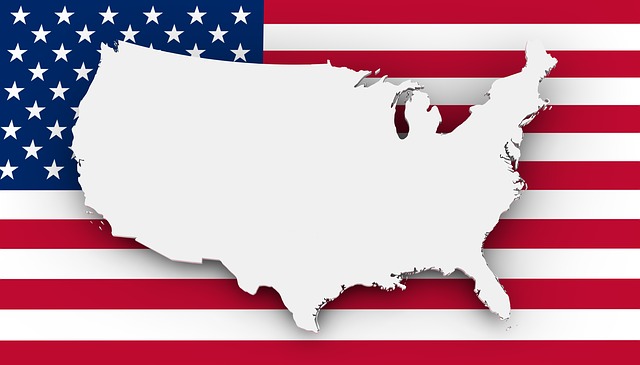The presence of a 50-foot American Flag at government installations transcends mere symbolism, serving as a powerful emblem of national pride and prestige. This article delves into the multifaceted considerations necessary to appropriately display such an iconic flag, from its robust design and historical significance to the security measures that protect it. We explore the practical aspects of large-scale flags, including material selection for optimal wind resistance and durability, and provide insights through case studies where these flags have been successfully integrated into public spaces. Join us as we examine the impact and importance of the 50-foot American Flag in the civic landscape.
- Ensuring Prestige: The Role of a 50 Foot American Flag in Government Installations
- Design Considerations for Large-Scale Flags: Materials, Wind Resistance, and Durability
- Historical Significance and Symbolism: The 50 Foot American Flag as a National Emblem
- Security Protocols for Protecting Iconic Flags at Government Sites
- Case Studies: Successful Implementations of Oversized American Flags in Public Spaces
Ensuring Prestige: The Role of a 50 Foot American Flag in Government Installations

A 50-foot American flag serves as a powerful symbol of national pride and identity within government installations. Its impressive size ensures that it is visible from significant distances, making a bold statement about the values and sovereignty that the United States represents. The prominence of such a large flag contributes to a sense of unity and civic engagement among citizens who enter these spaces. It also communicates a commitment to the principles upon which the nation was founded—liberty, justice, and democracy. The presence of a 50-foot American flag at government buildings is not merely about aesthetics; it underscores the respect for tradition and law that these institutions uphold. The scale of the flag also serves as a reminder of the country’s stature on the global stage, projecting an image of strength, resilience, and pride to both domestic and international observers. Incorporating a 50-foot American flag into the design of government installations is thus a nod to historical significance, a testament to national unity, and a statement that upholds the country’s legacy for current and future generations.
Design Considerations for Large-Scale Flags: Materials, Wind Resistance, and Durability

When designing large-scale flags, such as a 50-foot American flag, for government installations, material selection and wind resistance are paramount to ensure durability and respect for the symbol being represented. The fabric must be robust enough to withstand prolonged exposure to the elements without degrading over time. High-tenacity nylon or polyester is often preferred due to their strength and resistance to fading and tearing. These materials also dry quickly, which minimizes the risk of mold or mildew growth—common issues that can compromise the integrity of the flag.
Wind resistance is another critical factor in designing large flags. The design must incorporate features that allow for efficient airflow to prevent the flag from becoming a hazard in high winds. Engineers often employ aerodynamic principles, such as tapering the flagpole and using a reinforced hoist and fly ends. Additionally, the flag’s dimensions and shape are carefully calculated to balance visibility with structural integrity. For instance, a 50-foot American flag must be designed to maintain its form without collapsing or tearing when caught in severe weather. This ensures that it remains a dignified representation of national pride and can be seen from considerable distances, fulfilling its purpose as a symbol of unity and identity for the public. The attention to detail in the design process reflects the importance of these flags not just as symbols but as enduring monuments that embody the values they represent.
Historical Significance and Symbolism: The 50 Foot American Flag as a National Emblem

The 50-foot American Flag, a towering symbol of national pride and unity, holds a significant place in the history of the United States. Its impressive dimensions are not merely a testament to the flag’s grandeur but also serve as a powerful reminder of the country’s values and aspirations. Since its inception, the flag has been a beacon of freedom and democracy, representing the collective resolve of the American people. The flag’s historical significance is further underscored by its presence at iconic events and locations across the nation, where it stands as a national emblem, reflecting the ideals upon which the country was founded. Its large scale ensures that it can be seen from afar, reinforcing the shared identity of Americans and symbolizing the strength and endurance of the nation.
Moreover, the 50-foot American Flag is steeped in symbolism, each stripe and star meticulously designed to convey deeper meanings. The stars, representing the 50 states, are aligned in seven horizontal rows, reflecting the original 13 colonies that declared independence from Britain, and the 37 lines of stars and stripes collectively pay homage to the original design by Francis Scott Key. This flag serves as a living chronicle of American history, a daily narrative for millions, and an inspiration to those who cherish the country’s legacy. Its prominent display at government installations across the nation is not only a statement of national identity but also an affirmation of the shared values and collective heritage that bind the American populace together as one.
Security Protocols for Protecting Iconic Flags at Government Sites

In government installations across the nation, iconic symbols such as the 50-foot American Flag serve as a proud emblem of national unity and identity. The security protocols put in place to protect these colossal flags are both robust and multifaceted, ensuring their integrity and respect. These protocols encompass surveillance systems that monitor for any potential threats, climate control mechanisms to preserve the flag’s condition against environmental factors, and physical barriers to safeguard against vandalism or tampering. Moreover, the flags are often constructed with high-durability materials to withstand harsh weather conditions and are regularly maintained by specialized personnel. The presence of these large flags at government sites not only signifies American heritage but also requires a commitment to their continuous protection and proper display as a testament to the nation’s values and history.
The security measures extend beyond physical barriers; they include advanced access controls, perimeter intrusion detection systems, and real-time monitoring by dedicated security personnel. The use of high-definition cameras and analytics software allows for proactive identification and response to any threats, ensuring the flags remain unblemished and fully representative of the nation’s ideals. The importance of these flags as a national symbol necessitates the implementation of cutting-edge technology and vigilant human oversight to protect them against any form of desecration or damage.
Case Studies: Successful Implementations of Oversized American Flags in Public Spaces

50-foot American flags have become a symbol of national pride and identity, serving as landmarks in various government installations across the nation. A notable case study is the implementation of such a large flag at the San Diego International Airport’s Terminal 2. This oversized flag, standing at an impressive 50 feet in height with a 100-foot flying span, has become an instantly recognizable emblem for travelers arriving and departing. The scale of the flag not only reflects the airport’s commitment to showcasing American heritage but also contributes to the terminal’s design, creating a sense of unity and patriotism that resonates with visitors from diverse backgrounds.
Another successful implementation is found at the Liberty Bell Center in Philadelphia. Here, a 50-foot American flag complements the historical significance of the site, symbolizing the enduring values of freedom and democracy. The flag’s substantial size ensures it is visible from afar, making it a prominent feature that enhances the visitor experience and serves as a backdrop for national events and ceremonies. These examples demonstrate how oversized American flags can be effectively integrated into public spaces, creating a powerful visual impact while honoring the country’s traditions and ideals in government installations.
